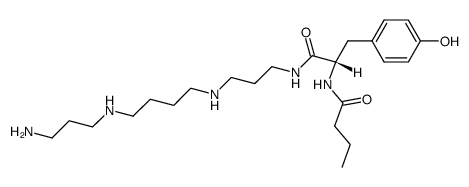NMDA receptor subtype selectivity: eliprodil, polyamine spider toxins, dextromethorphan, and desipramine selectively block NMDA-evoked striatal acetylcholine but not spermidine release.
M Nankai, D Fage, C Carter
文献索引:J. Neurochem. 64(5) , 2043-8, (1995)
全文:HTML全文
摘要
NMDA receptor stimulation concomitantly increases the release of [14C]acetylcholine and [3H]-spermidine from rat striatal slices in vitro. The NMDA-induced release of both acetylcholine and spermidine was blocked with equal potency by the NMDA channel blocker phencyclidine (0.1-10 microM). However, certain other channel blockers, including dextromethorphan (1-100 microM), which antagonized NMDA-evoked acetylcholine release without affecting NMDA-evoked spermidine release, and dextrorphan (1-100 microM) and memantine (1-100 microM), which block NMDA-evoked acetylcholine release more potently than NMDA-evoked spermidine release, showed greater selectivity of action. As previously shown for ifenprodil, eliprodil (SL82.0715; 1-100 microM) blocked NMDA-evoked acetylcholine but not spermidine release. This selectivity is also observed for other agents interacting with the polyamine site(s) on the NMDA receptor, including arcaine (1-1,000 microM), philanthotoxin343, and argiotoxin636 (10 microM) and was also noted for desipramine (1-100 microM). The NMDA-induced release of acetylcholine and spermidine is likely to be mediated by different native NMDA receptor subtypes, and several NMDA antagonists may be candidates for a selective action at a particular NMDA receptor subtype.
相关化合物
| 结构式 | 名称/CAS号 | 分子式 | 全部文献 |
|---|---|---|---|
 |
Philanthotoxin 343
CAS:115976-93-7 |
C23H41N5O3 |
|
Open-channel blockade is less effective on GluN3B than GluN3...
2012-07-05 [Eur. J. Pharmacol. 686(1-3) , 22-31, (2012)] |
|
Neuroactive polyamine wasp toxins: nuclear magnetic resonanc...
1996-01-19 [J. Med. Chem. 39(2) , 515-21, (1996)] |
|
A sequential high-yielding large-scale solution-method for s...
2003-01-01 [Eur. J. Med. Chem. 38(1) , 117-22, (2003)] |
|
Potent and voltage-dependent block by philanthotoxin-343 of ...
1997-09-01 [Br. J. Pharmacol. 122(2) , 379-85, (1997)] |
|
Possible influence of intramolecular hydrogen bonds on the t...
2000-01-01 [Receptors Channels 7(3) , 227-36, (2000)] |